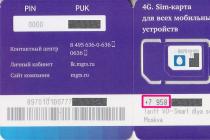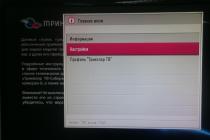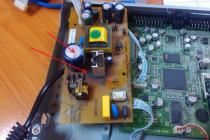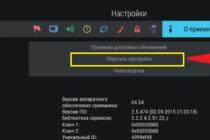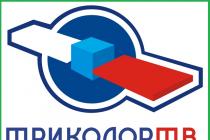Program XML Converter is designed to transform XML files (XML documents) with one of the standard existing funds transform XML files with the XQuery query technology. In this case, the conversion can be carried out at once several files in a row. In addition to the conversion itself, the program has the function of combining converted files and renaming both the source files and the final conversion files based on the information contained within the files themselves. The renaming function allows you to get meaningful names for the processed files, for example, the number of the cadastral quarter for CBT files. The program has a flexible customization system and has many advantages.
Although the program XML Converter can convert any XML files, currently, it is primarily intended cadastral engineers , and is aimed at converting XML files / documents of Rosreestr, cadastral registration authorities - cadastral extracts and cadastral plans territory (CBT). This is achieved due to the presence in the standard delivery set of a set of XQuery queries designed to convert Rosreestr XML files into other widespread text, exchange formats, including MIF / MID, DXF, CSV, TXT, HTML, etc.
Nevertheless, if there is a need to transform a set of the same type of XML file from another area, potential users of the program can contact the author to work out the issue of developing special requests for converting such files.
using standard XQuery XML transformation technology
ease of use and high speed work
the ability to batch convert multiple files at once
the ability to combine the conversion results into single files (for example, for Rosreestr XML files, to combine the conversion results of several statements into one bundle of MIF / MID files and, as a result, get a single table in MapInfo)
the ability to rename XML files based on the information contained in the files themselves (for example, for Rosreestr XML files with an arbitrary name, renaming occurs according to the cadastral number of the quarter / site and the date of issue of the statement)
complete with the program there are requests for converting to the most commonly used text formats MIF / MID, DXF, CSV, TXT, HTML
the form of the final tabular information of standard queries is as close as possible to the traditionally used tabular form of an ordinary paper document of a cadastral plan of territories (CPT)
the ability to extract additional information not included in the paper analogue of the document ( for example, extracting all coordinates of parcels within a block from latest version CBT)
the ability to customize the form and formats of the resulting files by editing conversion requests, since requests are provided in an open form
small size of the installer, easy to install
does not require installation of additional libraries - all necessary libraries are already included in the installer
the ability to connect external XQuery query handlers, which can provide a significant increase in the performance of processing large files
Along with the program, requests are supplied for converting Rosreestr XML files such as statements and CBT to the following widespread formats: MIF / MID, DXF, CSV, TXT, HTML.
MIF / MID format- is an exchange format of GIS MapInfo due to its simplicity, has become widespread and de facto is an exchange format for cadastral work and is widely used by cadastral engineers in their activities.
DXF format- is the exchange format of the automated drawing program AutoCAD and is widely used for exchange graphic information related to drawing, design, cartography. 
Files in DXF format can be easily and losslessly opened or imported into Microstation. 
CSV format- text format for presenting tabular data. Easily understood by any program spreadsheets such as Excel. Uses a semicolon as the field (column) separator. 
TXT format- is similar to CSV format, but uses a tab character as a separator. Because of this, the information contained in these files is easily perceived in text editor... In addition, there is a special request for conversion to TXT format that extracts point numbers with their coordinates in NXY format. 
HTML format- the format used to present pages on the Internet. It is convenient because of the visual presentation and the fact that an Internet browser capable of viewing it is available on every computer. 
The information selected from the original XML document for the part representing the data for all formats is identical and as close as possible to the content presented in the table of the paper CBT, namely
- КН - cadastral number of the plot in full
- ЕЗ - cadastral number of a single land use, if the site is included in it
- Address - location (address) of the site
- Category - land category - number, as in CBT
- Use - Permitted Use
- Area - area in square meters rounded up to 1 sq. M.
- Accuracy - Accuracy without rounding
- Area_code - type of area (008 - Declared, 009 - Revised)
- Cost - cadastral value in thousand rubles.
- Rights - a type of property rights, if there are several, they are listed separated by commas
- Encumbrances - encumbrances, if there are several, are listed separated by commas
- Date - the date the site was created, i.e. its registration
- Status - the status of the plot in the cadastre (01 - Previously accounted for, 05 - Certified, 06 - Registered, i.e. temporary plots have the status 05 - certified, but not registered)
New in version 1.8.0
- Added the ability to correct the source XML files of statements and CBT for some cases when these files are incorrect (received in this form from Rosreestr). Such cases include using incorrect tags for coordinates (<_x
>instead of
and<_y >instead of ), use of undeclared prefixes (e.g. adrOut :). For the corrected files, copies of the original files are created with the –copy suffix. - Added the ability to check and remove duplicates in a merged file. As a rule, when combining CBT into adjacent quarters, CBT data have many common zones and boundaries, which are duplicated in the combined file. The new functionality allows you to remove duplicate zones and borders for this case, leaving only one copy of each zone and border.
- In graphical data extraction requests, the previously single layer of zones is divided into two separate layers: territorial zones and zones with special conditions for the use of the territory (ZOUIT). Accordingly, two separate requests were made for the MIF / MID format: Territorial Zones and ZOUIT Zones, which after conversion give two separate layers with the suffixes _terzone and _zouit. For the DXF format, the requests have been corrected so that in the generated DXF files, instead of one layer GKN_ZONE, two separate layers began to be created: GKN_TERZONY and GKN_ZOUIT.
- Stricter control of the program version has been introduced. The "About" dialog now always displays the current version number, taking into account changes in resources.
New in version 1.7.5
- Added a query that allows you to extract points of parcels with their designation and accuracy in the form of point objects in MIF / MID format from extracts and CBTs of the 2017 format.
- Some queries for the 2017 format have been slightly improved.
New in version 1.7.4
- Requests have been developed for the transformation of USRN statements and cadastral plans of the territory (CPT), provided in a new, not yet approved format, the introduction of which is due to the transition to the new law 218-FZ "On state registration real estate ". The set of requests includes conversions to graphic formats MIF / MID, DXF and text CSV, TXT. This format is already used in the Krasnoyarsk Territory.
- Due to the fact that there is already the third significant change in the format of the provided cadastral data for groups of requests processing various formats, a year has been added to the title when this format began to be applied.
New in version 1.7.3
- Due to the fact that the Unified State Register of Real Estate (USRN), despite the name, is still not unified and contains information from the State Real Estate Cadastre (GKN) and information from the State Register of Rights (PIU) separately, extract of USRN 2017 on land plots and real estate objects began to contain two sections of information on rights. The first, as before, contains GKN information, the second new section contains hydraulic fracturing information. The information in these sections may vary. The program has added queries that, in a tabular form (CSV and TXT formats), extract the characteristics of plots and real estate objects, and the rights and encumbrances in them are extracted two times: separately by the State Property Committee and the State Registration Office.
New in version 1.7.2
- Improved universal queries for converting to DXF format in terms of recovering circular objects (CIRCLE objects are created, while all others are POLYLINE) and better conversion of XML files of boundary plans.
- Improved universal queries of conversion to MIF / MID format in terms of better conversion of XML files of boundary plans. (Extraction of circular objects for this format was implemented earlier. In this case, such objects are converted to octagons).
New in version 1.7.1
- Added new pull queries in tabular form detailed characteristics land plots and real estate. Separate conversion requests have been created for parcels and real estate objects, and each of them is in two editions (4 requests in total): conversion to CSV format (semicolon separator) and conversion to TXT format (tab separator). The tables contain headers and the information is combined into a single table (CSV / TXT file). The source files for transformation are XML-files of cadastral extracts, passports, CPT, created according to new versions of the corresponding XML-schemas. The generated tabular presentation is convenient for analyzing information on plots and real estate objects contained in cadastral extracts, passports, CBT.
New in version 1.7.0
- Improved stability of the internal XQuery query processor. The internal processor can now handle larger XML files. (Before converting XML files big size the internal handler could lead to a crash and abnormal closing of the program)
- A more reliable way of passing the original XML files into the request for processing using an internal handler is used. (Previously, file processing might not start if there was a hash # symbol in the file name or path to it, or the computer was named in Russian in the network path)
- The selected transform and the query processor persist between program launches
- Added two new requests (each of which is in 2 editions XY and YX) for converting XML files of cadastral extracts and KPT, as well as other XML files of Rosreestr, created according to new XML schemes (for example, map plan, cadastral passports OKS etc.) in DXF format with objects layout by layers (the name uses DXF LAYER BY LAYER) and highlighting objects with different colors (see colors in New for version 1.6.6) set for layers. The first request "pulls" only graphics from XML, the second also information that is written to the block attributes. The following layer names are used:
- GKN_SLOCATIONS - for plots, their contours
- GKN_PARTS - for parts of plots (encumbrances)
- GKN_KVARTALY - for cadastral quarters
- GKN_BOUNDARIES - for the borders of NP and MO
- GKN_ZONES - for security and territorial zones
- GKN_NEMOVEZHIMOST - for buildings, structures, ONS
- The function of combining files obtained as a result of conversion into a single file has been improved. More complex files such as DXF files are now also merged using blocks and attributes. Those. the merge function now works for all target formats. It is also more correct to combine files if there are empty files without objects among them. (Previously, an empty file gave an extra line break in the combined file, which was critical for some formats and could lead to an error)
- Added a request for converting USRR statements to CSV format. By transforming a set of USRR statements with this query and combining the result, you can get the data of these statements in a tabular form, convenient for analysis, if you open the resulting combined file in one of the programs such as Excel or Calc
New in version 1.6.6
- Added highlighting when converting to MIF / MID and DXF graphic formats different types objects found in CBT and extracts, in different colors. The following colors are used:
- purple - for land plots and parts
- crimson - for cadastral quarters
- green - for security and territorial zones
- red - for the boundaries of settlements and municipal boundaries
- orange - for real estate
New in version 1.6.5
- Added a separate query for converting real estate objects, i.e. extracting their contours and characteristics into MIF / MID format from CPT
- Fixed handling of open contours (linear structures) in universal conversion queries to MIF / MID and DXF formats
- Reworked requests for converting CBT into text formats for processing new versions of XML schemas
New in version 1.6.4
- All requests for conversion into DXF and MIF / MID graphic formats of XML files of cadastral extracts, cadastral passports for plots and real estate objects, cadastral plans of the territory, created according to new XML schemes that came into force on December 31, 2014, have been reworked.
New in version 1.6.3
- Redesigned universal requests for converting to DXF and MIF / MID formats XML-files of cadastral extracts, cadastral passports for plots and real estate objects, cadastral plans of the territory, created according to new XML-schemes that came into force on December 31, 2014.
IMPORTANT! Due to the fact that the changes in the new XML schemas are quite significant, it is impossible to make it so that one request could be processed as files created by new version schemes, and according to the old one. Requests processing files created by new XML versions-circuits, have the prefix NEW in the name.
New in version 1.6.2
- Added queries for extracting OMC items from CPT in MIF / MID format and TXT format with tab delimiter.
New in version 1.6.1
- Added the ability to receive a printable representation of an XML file in HTML format using the XSLT transformation specified in the XML file, i.e. obtaining the usual printed form of extracts, KPT, passports for their electronic counterparts in XML format... Transformations are performed by external XSLT transformation engines. Supports two external handlers MSXLS 4.0 (included in the installer) and Saxon-HE 9.5 (installed separately). An Internet connection is required to perform XSLT transformations.
New in version 1.6.0
- Added the ability to use external request handlers, which makes it possible to transform large XML files, reaching hundreds of megabytes. You can download additional external request handlers in the same way as the program itself in the Download section.
- Drag-and-Drop support and command added for source file list operating system Open with, i.e. add source files for conversion from Explorer, or file manager you can simply drag and drop them into the list or by calling the Open With command.
New in version 1.5.3
- More correct processing of parts of parcels and common land uses for XML-files of extracts and CBTs, created according to new versions of XML-schemas.
- For generic queries, support has been added for processing XML files of landmarks created according to the new 4th version of the XML schema.
- Added a request to retrieve the formalized address of the plots from KPT and extracts, i.e. decomposed into components, as well as extracting the KLADR and OKATO codes.
New in version 1.5.2
- Conversion requests have been improved for the purpose of more correct processing of Rosreestr XML files such as extracts and CBTs, created according to new versions of XML schemes - the 5th for extracts and the 8th for the CBT. During the revision, the compatibility in the old versions is preserved. The following features of the new versions have been taken into account:
- The first point of the contour is now duplicated at the end of the spatial component description for closed contours
- Changed the name or location of some elements in the XML schema, such as area and cadastral value
- Due to the fact that the new 8th version of CPT can now contain the coordinates and characteristics of quarters, zones with special conditions of use and territorial zones, boundaries of settlements and municipalities, special requests for extracting object data and their characteristics into the MIF / MID format have been created. Universal queries focused on extracting the spatial component from any XML files of Rosreestr process these objects quite correctly.
New in version 1.5.1
- The requests for converting statements and CBT into the MIF / MID format have been revised and refined, two new fields Owners and Tenants have been added (there is no such information in the CBT), the Tenants field also includes persons and organizations in whose favor the encumbrances have been established.
- The universal requests for conversion to MIF / MID format have been significantly improved. Now, after transformation, these queries receive the same MapInfo table structure as regular queries, while all the information that was extracted by regular queries is also extracted not only from extracts and CBTs, but from XML files of landmarks, technical plans, etc. (provided, of course, that it is there)
- The ordering of queries in the list of queries available for conversion was carried out and their clear division into "ordinary" ones, that is, those that convert only extracts and CBTs and "universal" ones, that is, those that extract information not only from extracts and CBTs, but from others Rosreestr XML files - landmarks, technical plans, etc. Now conversion requests to MIF / MID format are available in two versions, conversion requests to DXF format without support for blocks and attributes are universal, conversion requests to DXF format with support for blocks and attributes are common, all conversion requests to tabular formats (CSV, HTML, TXT) are normal.
- In all requests, added "protection" against the appearance of line breaks in lines (for example, such as Allowed use, Address, etc.) (they should not be there, but for some reason sometimes they are there), the appearance of which led either to mis-synchronization (inconsistency) of data and graphics for files obtained after conversion in MIF / MID format or to an error opening DXF files.
- In all queries, the function of recovering the full address has been optimized and improved, which is used to recover the full unformalized address from the components if the address is not specified in this form (the Note field is not specified). A reference book of regions has been added and therefore the restored address will now always start with the name of the region.
Differences between "regular" queries and "universal" ones:
- Regular queries convert only extracts and CBT, universal queries can convert any XML files of Rosreestr, which have graphics (object coordinates).
- For normal queries, XML processing binding goes to parcels (Parcel node), in generic XML processing binding goes to spatial data (Entity_Spatial node), i.e. if there is no spatial component in the site (declarative site), the universal request will not “notice” and process such a site.
- Because the universal request for conversion to MIF / MID format does not process declarative sections, then records for objects without graphics are not created in MapInfo tables (None clause in the MIF file). This can be used, for example, for such programs that, when importing files in the MIF / MID exchange format, do not understand or do not correctly process objects without graphics (for example, Digitals).
- Due to the ability to extract data from any XML files of Rosreestr, universal queries can be used not only to transform information obtained from the inventory, but also to extract and control information entered into XML files intended for transmission to the inventory, for example, in the form of electronic versions of landmarks. , technical plans, maps (plan).
New in version 1.5.0
- The mechanism for storing program settings and used queries has been changed, made by analogy with programs XML Constructor and XML Reports. Now settings are stored in XML file instead of INI. Requests are stored in a separate resource folder specified during the installation of the program.
- The registration system of the program has been changed, made by analogy with the programs XML Constructor and XML Reports.
- The mechanism of the demo mode has been changed - now the program works without restrictions for 30 days, after which it stops working if there is no registration.
- The list of requests has been expanded with two new general-purpose conversion requests to MIF and DXF. Unlike other queries bound to the structure of XML files for extracts and CBTs, these queries can retrieve graphics from any Rossreetr XML files, including extracts, CBTs, boundary plans, technical plans, a map (plan), etc. the attributive information of various objects retrieved by these queries (existing and generated sites, contours and parts of a site, building, zone, etc.) is significantly different, then only the designation of the object is retrieved in this case. Using these queries allows you to:
- control the filling of catalogs for the generated boundary and technical plans, maps (plan)
- restore graphics from XML files in case of loss of original materials
What's new in version 1.4.2
- Updated XQuery query for converting XML files to MIF / MID format due to changes in XML schemas for multi-contour sections - multi-contour sections are now transmitted by separate objects, for each contour its own designation is written, for example: 123 (1) ( previous version request did not transfer multi-circuit sections for extracts and CBTs created according to new schemes).
- Updated XQuery query for converting XML files to DXF format (without attributes, blocks) - the contours of multi-contour sections are now signed (the previous version of the query transmitted the contours of multi-contour sections, but did not put signatures).
What's new in version 1.4.1
- Updated XQuery query for converting XML files to MIF / MID format - added one more column for creating signatures in MapInfo, containing only the designation of the parcel (or part) number without the cadastral quarter number in the same form in which they are indicated in the CPT and should displayed in the drawing of the boundary plan.
- Updated XQuery query for converting XML files to DXF format (without attributes, blocks) - text captions are placed in the center of the main (first) contour of objects with symbol the numbers of the site (or part) in the same form in which they are indicated in the KPT and should be displayed on the drawing of the boundary plan.
- Updated all DXF queries in that after converting and opening the converted file in AutoCAD or MicroStation, the current view displayed the converted parcels.
- All XQuery queries that retrieve data have been updated in terms of handling the case when there can be several records with permitted use - each permitted use is now displayed separated by commas (similar to handling rights and encumbrances).
- The XQuery query for selecting points of objects in the NXY format has been optimized and an extended version of it has been added that selects, in addition to the number, coordinates, precision, the method of fixing (for the code according to the reference, see XML-schema).
New in version 1.4.0
- Changed the procedure for switching from demo version to full version programs - now all you need to do is enter your personal serial number.
- Added the function of renaming both target and source documents based on the information contained in the converted XML files
- Updated XQuery-query for converting XML files into MIF / MID format in terms of processing common land uses and parts of parcels (now the incoming parcels of single land uses are converted to the same form as when converting QPT, i.e. as separate contours, and not combined into a multi-contour parcel as it was before; parts of parcels are also created as separate contours, with their own information - have not been created before).
- The algorithm for determining the limits for the MIF / MID, DXF formats has been changed (previously, the presence of areas with erroneous coordinates could lead to the setting of such limits that the areas did not fall on the working field and disappeared when opening converted files in GIS).
These are useful mechanisms, for example, for converting information to another format, to another XML schema, validating schemas, viewing graphics, etc.
Each service fulfills its own small task, and currently cannot pretend to be a serious program. However, web services go beyond the offered programs of the Polygon series and expand their capabilities.
The services on our site will evolve, offering you more options. Currently available services:
Converter of the cadastral plan of the territory from version 09 to version 08
The converter of the cadastral plan of the territory from the XML-file of 2015 version 09 to the previous format of the XML-schema version 08.With this converter you can import CBT into programs that do not support new format XML file 2015.
Converter of cadastral extract of land plot version 06 to version 05
Cadastral statement converter land plot from XML-file of 2015 version 06 to the previous format of XML-schema version 05. With this converter you can import statement into programs that do not support the new format of XML-file of 2015.
View drawings of cadastral XML files + geo editor
Viewing drawings of any XML files received from Rosreestr and submitted to Rosreestr: cadastral plan of the territory, cadastral extracts and passports of land plots and ACS, boundary plans, technical plans, zones, boundaries of subjects, municipalities and settlements, etc. cadastral map... Geo editor: creating areal and linear objects, getting and copying coordinates.
Printing XML-files of statements, passports, CBT
Received an extract from Rosreestr, but do not know how to print it? Download the XML file and get a printable form. The service is intended for printing XML-files received in Rosreestr: cadastral extracts and passports of land plots, cadastral plans of the territory, extracts and passports of capital construction objects.
Cadastral XML to MIF / MID Converter (MapInfo)
Converter of cadastral XML-files to MIF / MID-format. Coordinates of land plots, contours, parts, OKS, cadastral quarters, zones, subjects, municipalities and settlements are extracted into the MIF file. To a MID file: cadastral number, area, type of object (plot, part, quarter, etc.).
Cadastral XML to DXF Converter (AutoCAD)
Converter of cadastral XML-files to DXF-format (AutoCAD format). The coordinates of land plots, contours, parts, OKS, cadastral quarters, zones, subjects, municipalities and settlements are converted. The labels of objects and points are also displayed.
Converter of the cadastral plan of the territory version 08
Converter of the cadastral plan of the territory of XML-schema version 08 into tabular format. The coordinates of cadastral quarters, territorial zones and zones with special conditions for the use of the territory, subjects, municipalities and settlements are extracted. The coordinates can be copied to any software.
Converter of the cadastral plan of the territory from version 08 to version 07
Converter of the cadastral plan of the territory from an XML file, made according to XML-schema version 08, to the previous format according to XML-schema version 07. In the old format, there were no coordinates of the cadastral quarter, zones and boundaries of subjects. The result of the service is a link to download an XML file.
Converter of a statement of a land plot from version 05 to version 04
Converter of a statement of a land plot from an XML file, made according to XML-schema version 05, into the previous format according to XML-schema version 04. The result of the service is a link to download an XML-file.
Cadastral extract of a land plot from the cadastral plan of the territory
Get the cadastral extract of the land plot from the XML-file of the cadastral plan of the territory. Select the XML-file, specify the cadastral number of the land plot and download the XML-file of the statement. The statement can be printed out immediately.
Cadastral extract of the land plot
Get a cadastral extract of any land plot from the Rosreestr database: instantly, free of charge, up-to-date. Enter the cadastral number of the parcel and download the Express Statement XML file. The statement can be printed out immediately.
Cadastral passport OKS
Get a cadastral passport of any capital construction object (buildings, structures, premises) from the Rosreestr database: instantly, free of charge, up-to-date. Enter the cadastral number and download the passport XML file. The resulting file can be printed immediately.
Checking ZIP archives for completeness and compliance with Rosreestr requirements
Here you can check the completeness of the ZIP archive and its compliance with the Rosreestr requirements. For example, are all the required files attached to the XML file and signed? Do this before submitting the ZIP archive to Rosreestr to make sure that there are no errors in the archive. Load the archive file, and the scan results will be displayed immediately.
CBT archive
Archive of cadastral plans of territories, USRN files
CBT files ///
% Rosreestr
9016574 other cadastral files
Exchange CBT and extracts with colleagues: upload your file to our archive, download another file you need, see here a printout or drawing. Store your XML files in our archive so they won't get lost here. It's free.
23237 cadastral engineers- members of the archive. Thank you for your trust!
You are not logged in. Please log in to download files.
Login (authorize) /// Register
news
Point value RUB 21 when buying from 5 to 49 points, then it is cheaper ... to RUB 11 per point. Points are awarded instantly, the limit on the number of downloads is removed per day. Payment by cards, or QIWI. Other payment methods are available for an amount of 3000 rubles or more.
Upload files
You can upload up to 1000 files at a time by clicking on the first file in the list, then holding down the Shift, click on the last one. Download any XML-files or ZIP-archives (you can archives in archives), as well as files electronic signatures(but only in conjunction with XML files).
Download files
Download the file, to do this, indicate here the cadastral number of the quarter or property, or find it below in the list of regions, districts, quarters, objects. Use the tool to download a CBT for a list of quarters.
Instructions:
The service works for free, but you can thank us:
- Share the link on social networks
- Write on the forums about this service
- Tell your colleagues about the existence of this service
- Write a review on.
To convert xml statements of Rosreestr into MapInfo there is free utility(xml-converter) uploading to tables from extracts or cadastral plans, which can be downloaded from the page.
Connecting a data converter from Rosreestr XML schemas to MapInfo
To connect this utility, all files presented in the archive must be placed in the Tools folder, usually located on the C: Program FilesMapInfoProfessionalTools drive. Please note that for this operation and the utility to work, you need administrator-level rights. Then start MapInfo and the menu "Programs / Catalog of programs ...", press the button "Add". In the "Location" field, look for and select the "ImportMI" utility in the Tools folder and then click "Open". After that, in the "Title" line, set your name for this utility and press the "OK" button. Next, it is recommended to check the Startup box next to the name of this utility you specified and click the "OK" button. Now this utility under the name "XML Converter" will be in the "Programs" menu.

Import of data from xml statement of Rosreestr
Having launched the converter through the menu "Programs / Data converter from XML schemas of Rosreestr" in the import settings window, first of all, you must select the folder into which the conversion results will be saved by clicking on the "Folder" button. Next, we connect the converted xml file of the cadastral plan of the territory (CPT) or the cadastral extract of the land plot (KVZU) by clicking on the "XML file" button. By clicking the "Styles" button, you can make additional settings for layer styles relative to the standard one. Point numbers in the absence of xml-element Num_Geopoint should be selected from the list Su_Nmb element. If necessary, you can swap the coordinates by checking the corresponding checkbox.

By clicking the "Advanced" button, you can select batch processing of files and at the same time customize the type of conversion with cleaning or updating tables in the folder for the converted data. Conversion is launched by clicking on the "Convert" button.

By checking the box "Generate table output data in plan-schema with extrema from XML file" regardless of the selected coordinate system by clicking the "Projection" button, the data in the MapInfo tables will be in the plan-schema. To set the parameters of the local coordinate system, it is necessary to disable the above option by unchecking the checkbox. Click the "Projection" button to select the appropriate projection from the MAPINFOW.PRJ file. But as a rule, the parameters of the local coordinate system in this file are absent.
Setting the Local Coordinate System in MapInfo
The need to establish the parameters of the local coordinate system exists in cases where it is necessary to use information from different sources having excellent coordinate systems. For this it is necessary to register the parameters of the local coordinate system in the coordinate systems catalog MAPINFOW.PRJ. We open this file in a simple notepad and enter the parameters of the local system in the following similarity at the end of the document, omitting one line:
"- Local coordinate system -"
"MSK-12 Zone 1", 8, 1001, 7, 47.55, 0, 1, 1250000, -5914743.504
"MSK-12 Zone 2", 8, 1001, 7, 50.55, 0, 1, 2250000, -5914743.504
It should be noted that in this case, the first line points to a group of coordinate systems called Local Coordinate System. The second and third lines indicate the parameters "MSK-12 zone 1" and "MSK-12 zone 2". These parameters are calculated and approximate, and are taken from the article MSK-12 Republic of Mari El parameters for mapinfow.prj.
Data mapping example
As an example of importing an xml statement of Rosreestr, let us take the CBT, considered in the article "Cadastral plan of the territory". It also contains links to various ways of importing xml statements from Rosreestr.

As a result of comparing the data for the corresponding territory from the cadastral plan of the territory in the local coordinate system and data from the SAS. Planets with the connected layer of cadastral zoning of the territory, it turned out that the parameters are still approximate when used in Mapinfo.
Hide Drawing builder user's manual
Download files with the Cadastral plan of the territory (CPT), Cadastral extract (KB), Land-survey plan (MP) and Technical plan(TP) and get the blueprint.
These files are received from Rosreestr, have the XML extension, as a rule, they are in ZIP archives. You can put all available XML and ZIP files into one folder and download them in one archive. Moreover, there is no need to separate CBT from cadastral extracts, landmarks and others. It is also possible to download RAR and ZIP archive with these files. In addition to XML, archives may contain files with digitally signed, other files, attached archives. The output will be a drawing with the DXF extension, containing data from the selected files - it opens with AutoCAD (versions 2010 and higher), as well as a lot of open source software for any platforms (including mobile). You will also receive a report for opening in Excel (version 2007 and higher) with the XLSX extension.Instructions:
1. Select required files from computer and extension: XML, ZIP, RAR
2. Usually the coordinate systems used to describe real estate objects have an X-axis to the north, and the Y-axis to the east, since most CAD applications have the usual horizontal X-axis (which corresponds to the east) and the vertical Y-axis (which corresponds to the north) , for a visual display of the drawing, check the "Swap X and Y coordinates" checkbox.
3. Click "Generate Drawing and Report" and wait for completion.
4. When it is 100% complete - 2 links will appear for downloading the result - "download dxf", "download xlsx" - click on them and download the files to your computer.Layers in DXF drawing:
The drawing will display data from all types of XML files, and each type has its own group of layers:
1.for KPT files - layers like KPT_Contour, KPT_CadastralNumber - that is, with the KPT prefix
2.for KB files - layers with the KV_ prefix
3.for MP files - layers with the MP_ prefix
4.for TP files - layers with the TP_ prefixIn addition, each property of the CPT file is highlighted in a separate layer, so the KPT_Contour layer contains the contour of the plot, and the KPT_CadastralNumber layer contains a text label with a cadastral number. In turn, the TP_Contour layer contains the outline of the building / structure. In the text, Russian letters are written in English characters.
First of all, you will see the outlines, and already inside each outline there will be a block of text.
Other layers are listed below:
KPT_OMS - OMC point
KPT_Area - Area and uncertainty
KPT_Location - Location
KPT_State - Site status
KPT_Rights - Rights
KPT_Encumbrances - Rights Restrictions
KPT_Utilization - Permitted Use
KPT_SubEncumbrances - Sub-Parcel Constraints
KPT_Category - PKT category
KPT_DeltaGeopoint - Point error (near each contour point)
KPT_CategoryShtrih - Hatching depending on the category
KPT_Kvartali - Quarters
KPT_Zones - Zones
KPT_Bounds - PKT boundaries
TP_Type - Type: building / structurePages in XLSX report:
1. Objects KPT - Lists objects from all KPT files with a cadastral number and other properties, such as area, category
2. Objects KV - Lists objects from all KV files
3. MP Objects - Lists objects from all MP files
4. TP Objects - Lists objects from all TP files
5. Area Errors - Lists the inconsistencies between the calculated area of the parcels and the one that is written in XML
6. Area by Category - Shows how much area falls on each Category of land
7. Area by Utilization - Shows what area is for each Permitted Use
In case of malfunctions, write to e-mail





